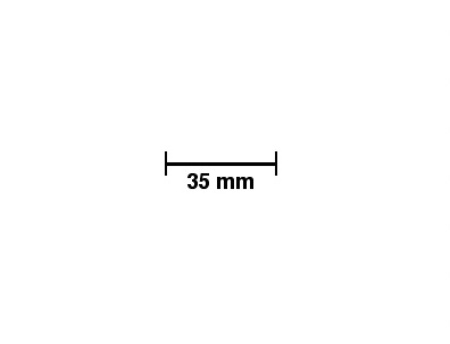
BetterPhoto Member |
|
What is 35mm?
New to photography..What part of the camera is 35mm? Is the film 35mm too? I'm confused already ! I've been given a camera with a 16mm - 50 mm lens - how does this go with 35 mm? Thanks for any answers : )
September 25, 2007
|
|
|
W. |
|
Hi Derek.
September 24, 2007
|
|
|
Alan N. Marcus |
|
Hi Derek, Early in the history of photography film had not been invented. Cameras made pictures on glass plates coated with light sensitive chemicals. The size of these glass plates mainly came from commonly available glass used to make windows for cabinets. By the early 1900 Kodak was making cameras that used a plastic like film that replaced the glass. One common film width made by Kodak was 70mm wide (3 ¾ inches). Thomas Edison invented the motion picture camera and projector. Thus he is the farther of the Movie Theater and popcorn etc. Edison made a deal with Kodak to make movie film. Kodak cut the 70mm film down the middle to save Edison money. The film width became 35mm which is about 1 1/3 inches wide. The German camera maker Leitz made a miniature precision camera in 1923 that accepted the movie film known as35mm. The film is loaded into a light tight can called a cassette. The film is about a yard long and when loaded with this film the camera takes about 25 pictures -- each image 24mm x 36mm. Every film size has a lens size that provides a view about equal to the human experience. In the case of the 35mm camera this is accomplished if the lens has a focal length of about 50mm A modern lens design is a zoom which allows the user to change magnification (focal length. A 16mm lens would be an extremely wide-angle. A lens marked 16mm - 50mm would be a zoom lens wide to normal on a 35mm film camera.
Alan Marcus (dispenses useless techno babble)
ammarcus@earthlink.net
September 24, 2007
|
|
|
W. |
|
|
|
|
|

35mm
W.
|
|
|
|
For your edification, Derek:
September 24, 2007
|
|
|
Alan N. Marcus |
|
A follow up on the history of the 35mm. May 1889 Thomas Edison purchased a camera from Kodak. The film used was 70mm wide. Latter his employee W. K. L. Dickson ordered a half width roll which measured 35mm width. This film size became the standard in the design of Edisons’s Kinetoscope motion picture camera. The film featured light sensitive chemicals coated on the then new clear plastic material (film) called celluloid. Edison needed peroration on the margins to facilitate transport of the film in the camera and the projector. Once the perforations (sprocket holes) were punched on both sides, the image area remaining was 24mm wide. He and his engineers established the image height at 18mm thus was established the format size of 24mm x 17mm which stood for many years. The Ernst Leitz camera of 1913 was called the Leica was designed by his engineer Oskar Barnack. The camera was marketed in 1924. The film chosen was movie film 35mm wide with sprocket holes. The image width was 24mm. Mr. Barnack doubled the 18mm height of the standard movie frame thus the camera format became 24mm x 26mm.
September 25, 2007
|
|
|
Alan N. Marcus |
|
Correction: The format became 24mm x 36mm
September 25, 2007
|
|
|
|
Log in to respond or ask your own question.
|